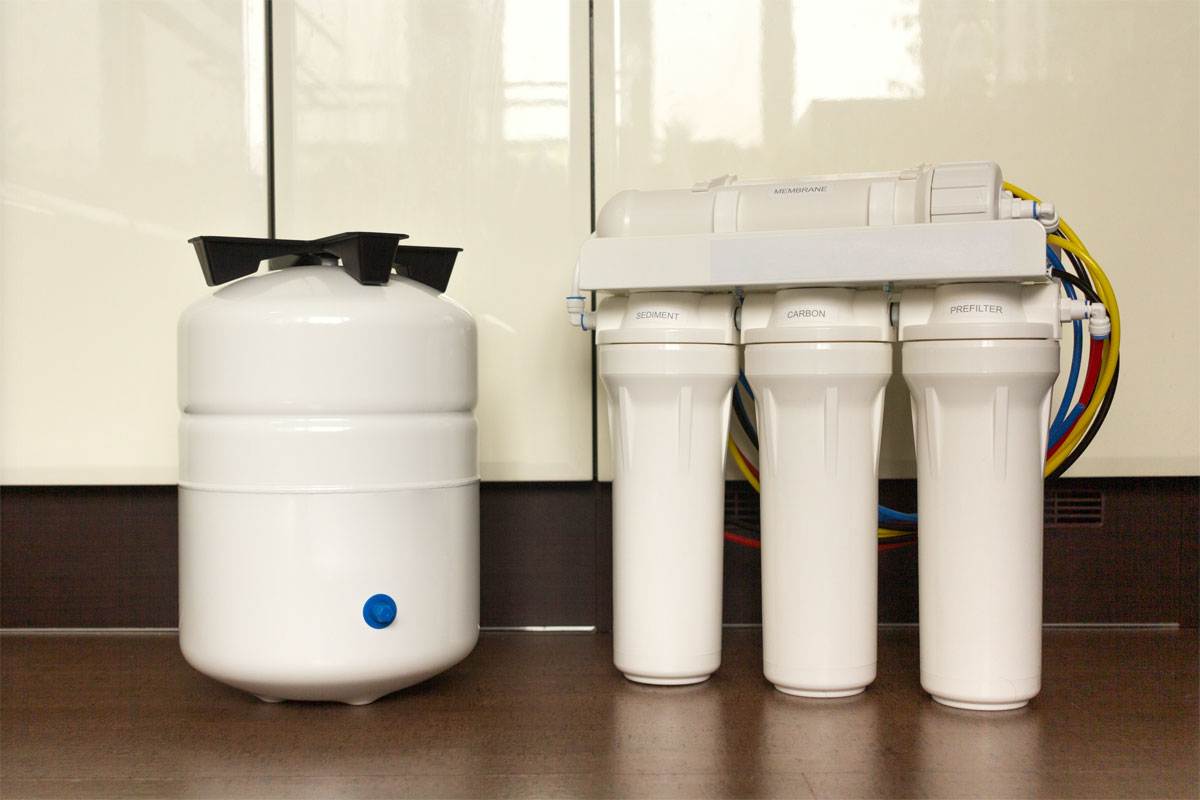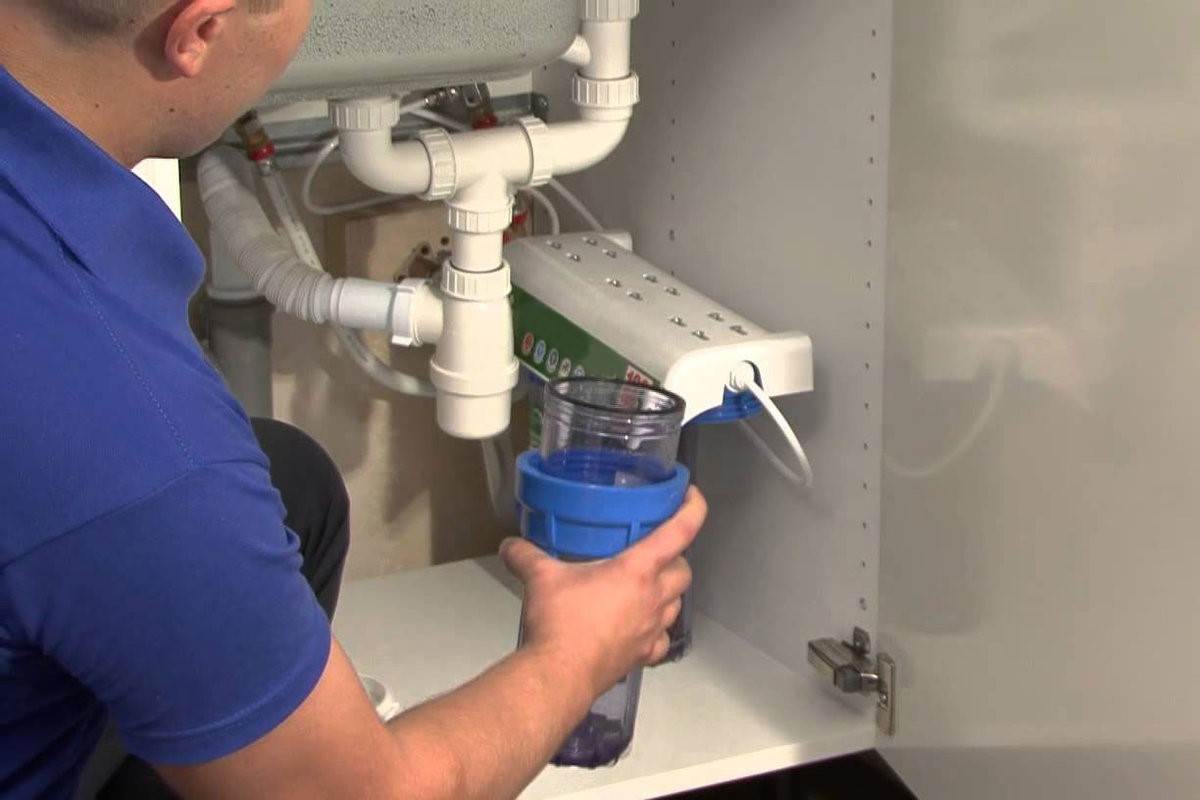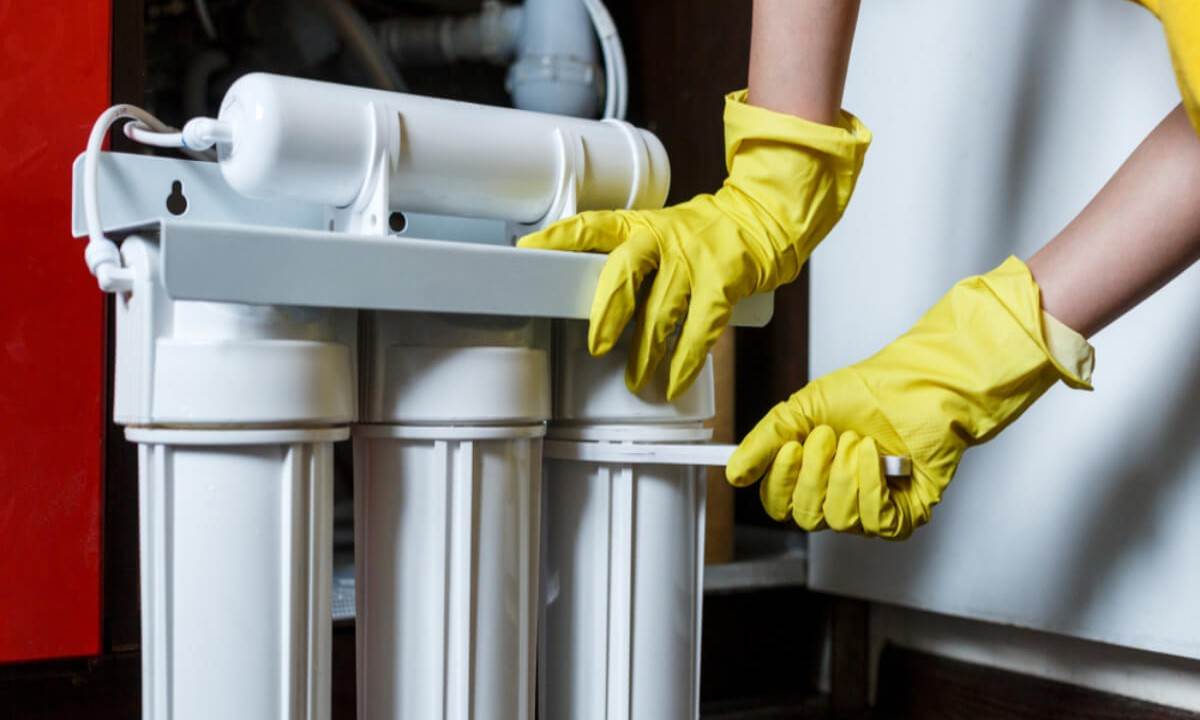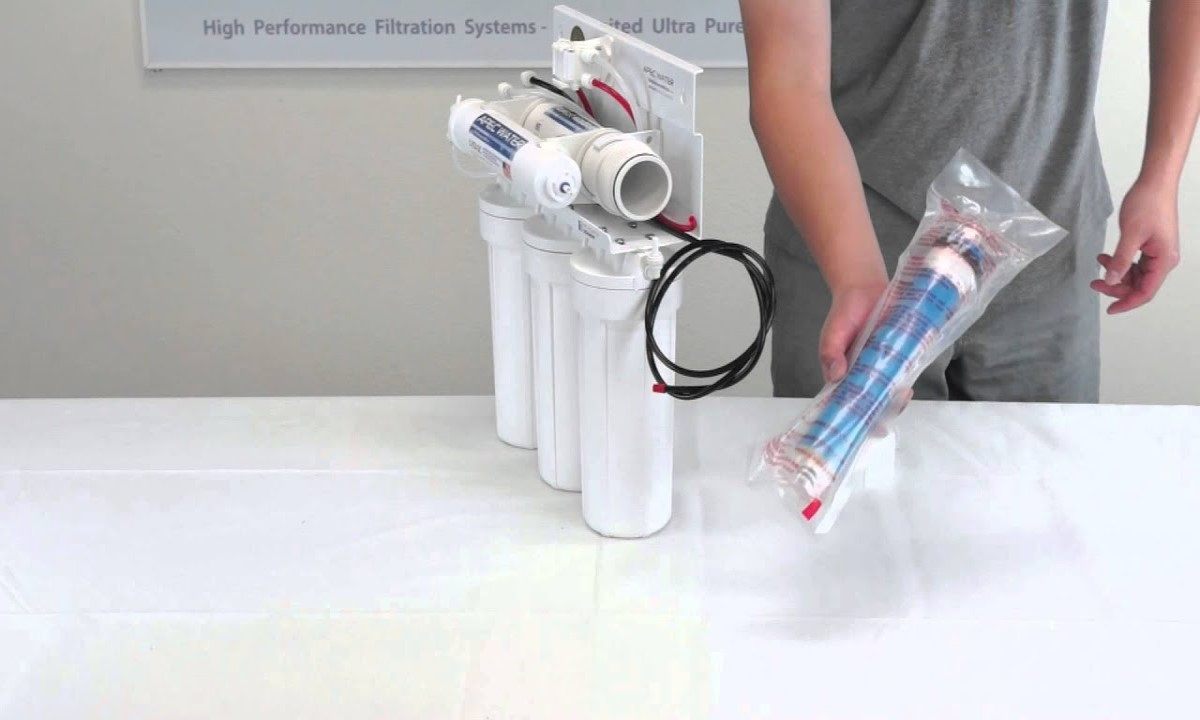Among different types of water purifiers, today we talk about membrane filter plus their comparison and specifications. We completely explain how they work, what are they made of and what are different sub-categories of this type of water purifier filter. What does the term membrane signify about water purifiers? Membranes are very thin sheets made of a synthetic plastic substance that contain very minute holes or pores across their surface. Membranes are used in a variety of applications. The many kinds of membranes that are utilized in water filters each have their own unique pore size distribution.  Micro-filtration membranes (MF), ultra-filtration membranes (UF), nano-filtration membranes (NF), and reverse osmosis (RO) membranes are the four categories into which membranes that are used in water filtration systems fall according to the size of the pores in the membranes. The kinds of membranes that are used in reverse osmosis RO water purifiers have the smallest pores, and their pores are so small that they are just a little bit larger than the size of a water molecule. Because of this, it will allow pure water molecules to pass through easily, but it will prevent the passage of larger molecules of salts and organic chemicals. The following diagram is a graphical depiction of the pore sizes of several types of membranes that are used to filter water. It shows how the pore sizes of various types of membranes compare with the size of various sorts of contaminants, such as salt molecules and viruses. A comparison between the pore sizes of RO, NF, and UF membranes and the sizes of various bacteria and pollutants is depicted below. In comparison to the size of the contaminants and pollutants, the pore size of the membrane We can perceive and comprehend the relative pore size of RO Membranes and the sizes of typical water contaminants thanks to the membrane pore size diagram that was provided above for the various types of membranes that are used to purify water. The operation of a RO water purifier is made clearer as a result of this. Because the pore size of the RO membrane is 0.0005 microns, which is less than the size of the Sodium Chloride Molecule which is 0.0007 microns, the RO membrane will not let the Sodium Chloride Molecule pass through.
Micro-filtration membranes (MF), ultra-filtration membranes (UF), nano-filtration membranes (NF), and reverse osmosis (RO) membranes are the four categories into which membranes that are used in water filtration systems fall according to the size of the pores in the membranes. The kinds of membranes that are used in reverse osmosis RO water purifiers have the smallest pores, and their pores are so small that they are just a little bit larger than the size of a water molecule. Because of this, it will allow pure water molecules to pass through easily, but it will prevent the passage of larger molecules of salts and organic chemicals. The following diagram is a graphical depiction of the pore sizes of several types of membranes that are used to filter water. It shows how the pore sizes of various types of membranes compare with the size of various sorts of contaminants, such as salt molecules and viruses. A comparison between the pore sizes of RO, NF, and UF membranes and the sizes of various bacteria and pollutants is depicted below. In comparison to the size of the contaminants and pollutants, the pore size of the membrane We can perceive and comprehend the relative pore size of RO Membranes and the sizes of typical water contaminants thanks to the membrane pore size diagram that was provided above for the various types of membranes that are used to purify water. The operation of a RO water purifier is made clearer as a result of this. Because the pore size of the RO membrane is 0.0005 microns, which is less than the size of the Sodium Chloride Molecule which is 0.0007 microns, the RO membrane will not let the Sodium Chloride Molecule pass through.  In addition, pathogens like viruses and bacteria, as well as organic molecules that are significantly bigger than the RO pore, are unable to pass through it. Different kinds of membranes that may be used to filter water, Why are membranes utilized in the process of purifying water? The most effective medium for the filtration of water is a membrane. The pore size of membranes that are used for the purification of water can be tailored in such a way as to offer the highest possible efficiency for the specific task at hand. For instance, it is not necessary to have very small holes to filter river water using a RO membrane, which demands high pressure and hence takes a great deal of energy to function well. Therefore, for water with a low level of salts, such as river water, you simply need to remove the germs and filth in the water. Because the UF membrane consumes very little energy and will filter out even the smallest viruses and dirt particles, it is the appropriate membrane for such an application. River water that passes through a UF membrane is purified and may be consumed without any concerns. When there are salts in the water, such as there are in salt water, then the purification of the water will necessitate the use of a RO membrane. Therefore, practically any chemical may be removed from water using a RO membrane. Only water and molecules that are smaller than the water molecule, like carbon dioxide gas, can flow through the RO membrane. In most cases, molecules that are smaller than water are safe for human consumption. The RO Water is so pure that its quality is practically identical to that of distilled water. Water purification systems that utilize reverse osmosis are frequently utilized by companies that produce bottled water. Filtration of water using membranes in some systems Again, a graphical illustration of what may and cannot travel through the various types of membranes is provided below in the form of a diagram.
In addition, pathogens like viruses and bacteria, as well as organic molecules that are significantly bigger than the RO pore, are unable to pass through it. Different kinds of membranes that may be used to filter water, Why are membranes utilized in the process of purifying water? The most effective medium for the filtration of water is a membrane. The pore size of membranes that are used for the purification of water can be tailored in such a way as to offer the highest possible efficiency for the specific task at hand. For instance, it is not necessary to have very small holes to filter river water using a RO membrane, which demands high pressure and hence takes a great deal of energy to function well. Therefore, for water with a low level of salts, such as river water, you simply need to remove the germs and filth in the water. Because the UF membrane consumes very little energy and will filter out even the smallest viruses and dirt particles, it is the appropriate membrane for such an application. River water that passes through a UF membrane is purified and may be consumed without any concerns. When there are salts in the water, such as there are in salt water, then the purification of the water will necessitate the use of a RO membrane. Therefore, practically any chemical may be removed from water using a RO membrane. Only water and molecules that are smaller than the water molecule, like carbon dioxide gas, can flow through the RO membrane. In most cases, molecules that are smaller than water are safe for human consumption. The RO Water is so pure that its quality is practically identical to that of distilled water. Water purification systems that utilize reverse osmosis are frequently utilized by companies that produce bottled water. Filtration of water using membranes in some systems Again, a graphical illustration of what may and cannot travel through the various types of membranes is provided below in the form of a diagram.  Flow occurs through several membranes, including MF, UF, NF, and RO. A graphical illustration of the numerous types of membranes and what can and cannot travel through them The membrane water filtration technology that is available today is the most effective technology for purifying water. Membrane water purifiers are a significant improvement over chemical and UV-based water purification methods. In the following sections, we break down each of the several types of membranes that are depicted in the above figure. What exactly is the MF Membrane? MicroFiltration is what MF stands for. MF Membrane features pores that are on average 0.1 microns in size. The size of the pores can range anywhere from 0.05 microns to 5 microns. The MF membrane is effective in filtering out water-borne protozoa like Cryptosporidium and Giardia, but it is not effective at filtering out bacteria and viruses. In the food business, MF, also known as microfiltration, is most frequently utilized for the processing of fruit juices and milk-based products. What exactly does the term "UF Membrane" mean? UF stands for UltraFilter. The next larger pore size membrane is the UF membrane, which has a pore size average of 0.02 microns and can vary from 0.001 microns to 0.05 microns. UF membranes have an average pore size of 0.02 microns. The UF membranes will not permit any microbes, including bacteria, viruses, or parasites, to pass through them. In circumstances when you have access to clean water but still need to protect yourself from bacteria, an ultra-filtration membrane water purifier may be a very helpful tool. An ultra-filter water purifier is superior to a UV water filter because an ultra-filter water purifier can effectively remove all germs and microorganisms from drinking water while just requiring the pressure that is typically found in a standard faucet.
Flow occurs through several membranes, including MF, UF, NF, and RO. A graphical illustration of the numerous types of membranes and what can and cannot travel through them The membrane water filtration technology that is available today is the most effective technology for purifying water. Membrane water purifiers are a significant improvement over chemical and UV-based water purification methods. In the following sections, we break down each of the several types of membranes that are depicted in the above figure. What exactly is the MF Membrane? MicroFiltration is what MF stands for. MF Membrane features pores that are on average 0.1 microns in size. The size of the pores can range anywhere from 0.05 microns to 5 microns. The MF membrane is effective in filtering out water-borne protozoa like Cryptosporidium and Giardia, but it is not effective at filtering out bacteria and viruses. In the food business, MF, also known as microfiltration, is most frequently utilized for the processing of fruit juices and milk-based products. What exactly does the term "UF Membrane" mean? UF stands for UltraFilter. The next larger pore size membrane is the UF membrane, which has a pore size average of 0.02 microns and can vary from 0.001 microns to 0.05 microns. UF membranes have an average pore size of 0.02 microns. The UF membranes will not permit any microbes, including bacteria, viruses, or parasites, to pass through them. In circumstances when you have access to clean water but still need to protect yourself from bacteria, an ultra-filtration membrane water purifier may be a very helpful tool. An ultra-filter water purifier is superior to a UV water filter because an ultra-filter water purifier can effectively remove all germs and microorganisms from drinking water while just requiring the pressure that is typically found in a standard faucet.  On the other hand, ultraviolet light destroys microorganisms and leaves their decomposing or dormant carcasses in the water. We have a specific page devoted to the UF method of water filtration. What does it mean for a membrane to be NF? NF stands for Nanofilter. The pore size of an NF Membrane ranges from 0.008 microns to 0.01 microns on average, although it may go as low as 0.001 microns. It is somewhat larger than the pore size of RO equipment, which is 0.0005 microns, and it is slightly larger than the size of a molecule of table salt, which is NaCl. Therefore, the NF membrane permits the monovalent common salt sodium chloride to flow through, but it does not permit the passage of divalent calcium salts, such as calcium carbonate, that have a diameter of 0.0009 microns. Because NF membranes can remove hardness from water, one of the most significant applications for NF membranes is in the process of water softening. NF membranes are also particularly effective in removing all bacteria and viruses from water while simultaneously purifying water of heavy metal salts such as arsenic, lead, cadmium, and mercury. There is a specific page on our site devoted to the nanofiltration method of water purification. What exactly does the term "RO Membrane" mean? The abbreviation "RO" refers to "reverse osmosis." The smallest pore size, which is around 0.0005 microns, is found in RO membranes. This is just somewhat larger than the size of a water molecule, but it is significantly less than the size of a sodium chloride molecule, which is 0.0007 microns in length.
On the other hand, ultraviolet light destroys microorganisms and leaves their decomposing or dormant carcasses in the water. We have a specific page devoted to the UF method of water filtration. What does it mean for a membrane to be NF? NF stands for Nanofilter. The pore size of an NF Membrane ranges from 0.008 microns to 0.01 microns on average, although it may go as low as 0.001 microns. It is somewhat larger than the pore size of RO equipment, which is 0.0005 microns, and it is slightly larger than the size of a molecule of table salt, which is NaCl. Therefore, the NF membrane permits the monovalent common salt sodium chloride to flow through, but it does not permit the passage of divalent calcium salts, such as calcium carbonate, that have a diameter of 0.0009 microns. Because NF membranes can remove hardness from water, one of the most significant applications for NF membranes is in the process of water softening. NF membranes are also particularly effective in removing all bacteria and viruses from water while simultaneously purifying water of heavy metal salts such as arsenic, lead, cadmium, and mercury. There is a specific page on our site devoted to the nanofiltration method of water purification. What exactly does the term "RO Membrane" mean? The abbreviation "RO" refers to "reverse osmosis." The smallest pore size, which is around 0.0005 microns, is found in RO membranes. This is just somewhat larger than the size of a water molecule, but it is significantly less than the size of a sodium chloride molecule, which is 0.0007 microns in length.  Therefore, Sodium Chloride and any other salts are prevented from passing through the RO membrane, and only clean water is allowed to do so. Therefore, one of the most important uses for RO membranes is in the process of saltwater desalination, which is the process of removing salt from seawater to produce clean drinking water. There is a specific page on our site devoted to the purification of water by reverse osmosis. How to get the best deal on Water Purifiers The easiest approach to shopping for water purifiers in India is to start by perusing the websites of the country's most reputable online retailers, where you can find every type of water purifier currently on the market. For instance, if you go to the homepage for All Water Purifiers available in India that is hosted on Amazon.in, you will see the whole variety of Indian Water Purifiers together with their most reduced price and the full specs for each model. You now have access to useful information and may select the water purifier model that best suits your needs. Now that you have decided on the type of water purifier you want to purchase, you may go to local stores to discover the model of water purifier you have selected and check to see if Amazon. has a price that is comparable to the one you found locally. Amazon is the largest and most reputable online retailer in the world, so its prices are almost always going to be lower than those of its competitors. Additionally, the company buys in bulk directly from manufacturers, so it can offer a lot of products. If you make your purchase through Amazon, the company will make the necessary arrangements to have the water purifier installed in your home at no additional cost to you.
Therefore, Sodium Chloride and any other salts are prevented from passing through the RO membrane, and only clean water is allowed to do so. Therefore, one of the most important uses for RO membranes is in the process of saltwater desalination, which is the process of removing salt from seawater to produce clean drinking water. There is a specific page on our site devoted to the purification of water by reverse osmosis. How to get the best deal on Water Purifiers The easiest approach to shopping for water purifiers in India is to start by perusing the websites of the country's most reputable online retailers, where you can find every type of water purifier currently on the market. For instance, if you go to the homepage for All Water Purifiers available in India that is hosted on Amazon.in, you will see the whole variety of Indian Water Purifiers together with their most reduced price and the full specs for each model. You now have access to useful information and may select the water purifier model that best suits your needs. Now that you have decided on the type of water purifier you want to purchase, you may go to local stores to discover the model of water purifier you have selected and check to see if Amazon. has a price that is comparable to the one you found locally. Amazon is the largest and most reputable online retailer in the world, so its prices are almost always going to be lower than those of its competitors. Additionally, the company buys in bulk directly from manufacturers, so it can offer a lot of products. If you make your purchase through Amazon, the company will make the necessary arrangements to have the water purifier installed in your home at no additional cost to you.
💰 Tenfold your income 💎
